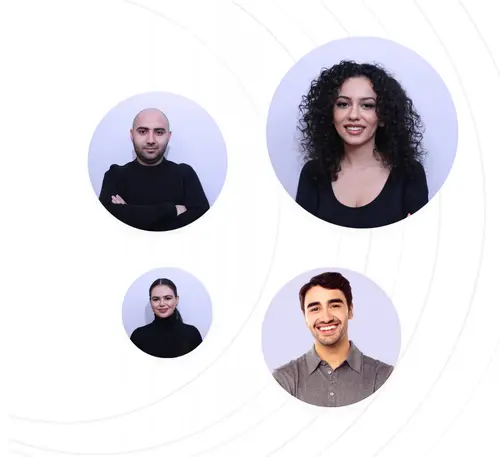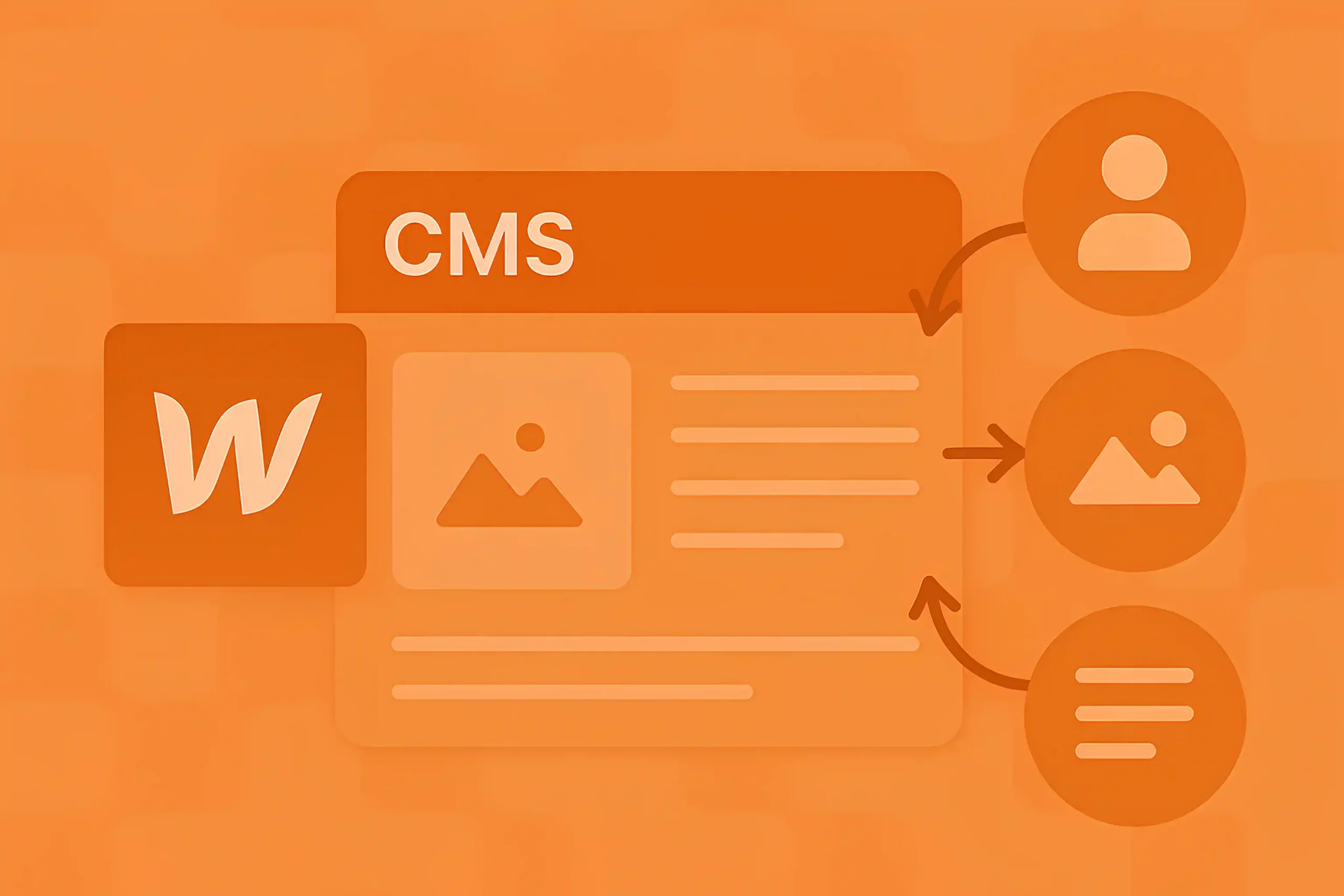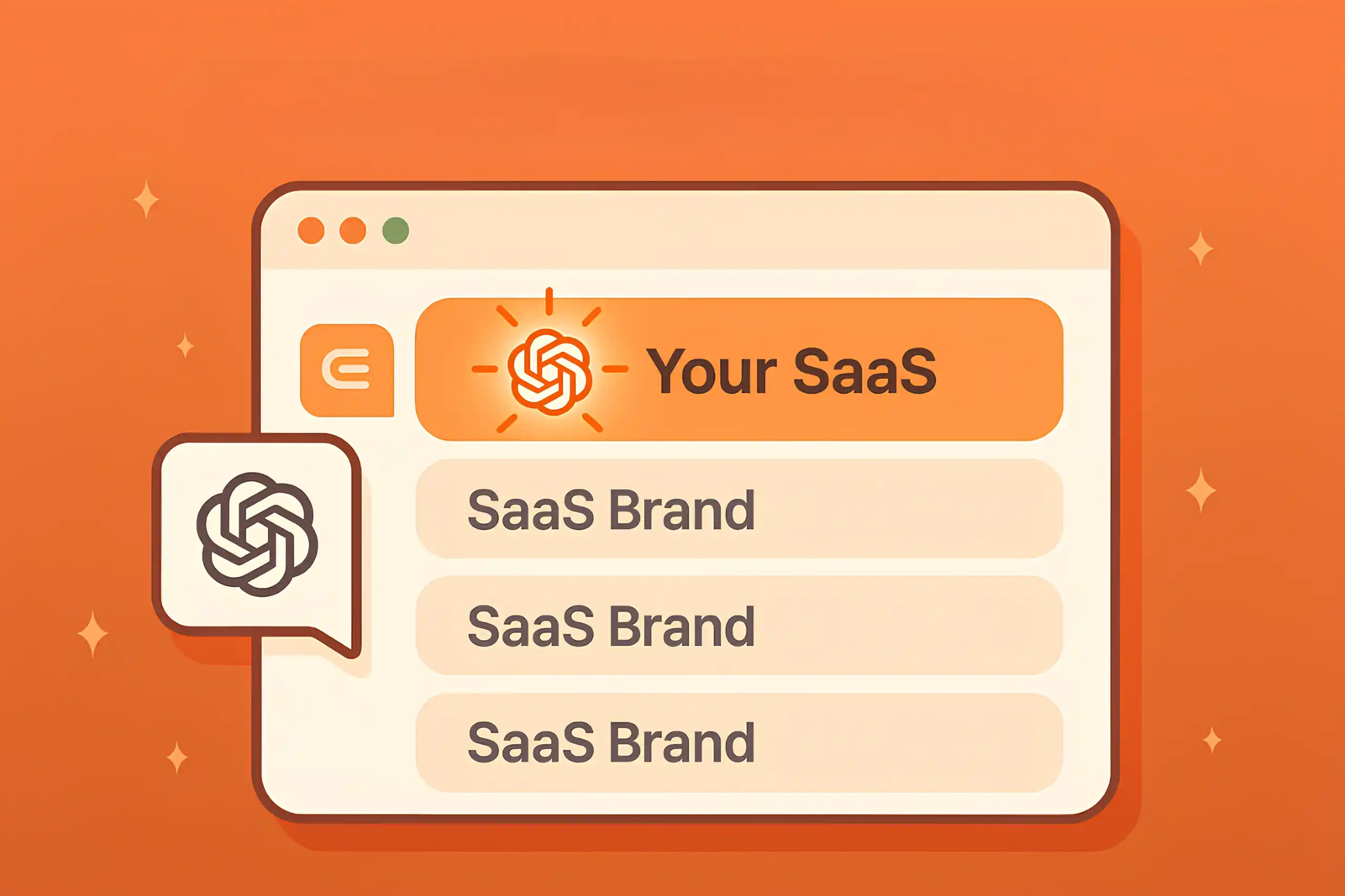Updated November 5, 2025
5 SaaS SEO Case Studies Straight From Our Agency’s Work
I’ve been meaning to sit down and share my SaaS SEO experiences for a long time, but like most of us, I’ve always had too much on my plate. Between client work, new projects, and the constant whirlwind of testing and learning, I rarely get the chance to pause and put everything into words.
This weekend, I finally decided to block out the noise and dedicate time to something I’ve wanted to do for ages: document the real stories, the wins, the struggles, and the lessons that shaped my SaaS SEO journey.
What follows are five SaaS SEO case studies taken straight from my own campaigns. If you’re looking to achieve similar results for your own SaaS, you can always reach out to our SaaS SEO agency.
SaaS SEO Case Study #1: Driving Organic Growth for a B2B SaaS
A while back, our B2B SaaS SEO agency worked with a large B2B SaaS company – WorkHuman, that was already well respected in its space and trusted by some major global names.
They had the reputation and the client base, but their presence wasn’t as strong as it should have been. Despite being an authority in their industry, they weren’t appearing where their buyers were searching.
The company wanted to strengthen its brand visibility and significantly grow its organic traffic. Their goal was simple but ambitious: to secure top positions in search results for competitive, industry-specific keywords, everything from workplace management to employee recognition software. The long-term goal was to cement themselves as the go-to leader in their industry.
One of the biggest challenges in this project was the level of competition around the core keywords.
For example, terms like employee recognition software came with a keyword difficulty of over 80, meaning we were up against some of the toughest competitors in the industry.
That’s why it wasn’t realistic to rely only on head terms. Instead, we had to build out a strong library of long-tail content and develop topical authority step by step.
Strategy
Our team knew that B2B SEO requires a completely different approach from a typical B2C project. In B2B, the content has to reach decision-makers, people who are less concerned with generic messaging and more interested in ROI, scalability, and how a solution fits into their business objectives.
That’s where we stepped in with a tailored SEO strategy. Drawing on my experience as a B2B SEO agency partner and the same principles I often share in my B2B SaaS SEO guides, we built a plan that spoke directly to the audience that mattered most.
At the start, the only people who truly knew the industry inside and out were the co-founders. The problem was, they were far too busy to handle content production themselves.
So we made the decision to hire a small team of SEO writers and train them intensively for about three months. During this time, they not only learned the fundamentals of SEO content writing but also became familiar with our software, so they could write with accuracy and authority.
We also offer a specialized SEO course for B2B founders who want to understand SEO strategies at a deeper level.
Once the team was ready, we focused on building topical authority. Over the course of a year, we published more than 300 blog posts. Every piece of content was reviewed internally before going live, making sure it met Google’s E-E-A-T standards and aligned with our long-term SEO goals.
Importantly, we didn’t let keyword difficulty scores from tools like Ahrefs dictate our decisions. Instead, we did manual analysis, reviewing pages, evaluating competitors, and assessing real opportunities that others might have overlooked.
From there, our SaaS link-building agency started running aggressive link-building campaigns. We concentrated on securing high-quality links for our middle- and bottom-of-funnel blog posts and then used internal linking to direct that authority toward our most important commercial pages. (By the way, if you want to dive deeper into how this works, you can check out our full SaaS SEO guide.)
Looking back, I’d say the heart of our strategy was the attention to detail. We invested in on-page SEO, topical authority, and E-E-A-T, and the consistency paid off. Of course, the entire journey took well over a year, but I’ve condensed it here into a few sentences to capture the essence of the approach.
The Results
The results were significant. Starting from over 80k organic visitors, the blog grew to over 250,000 organic visits. The traffic came directly from the content strategy we built; blog posts that spoke to the right people and positioned the company as an authority in their space.
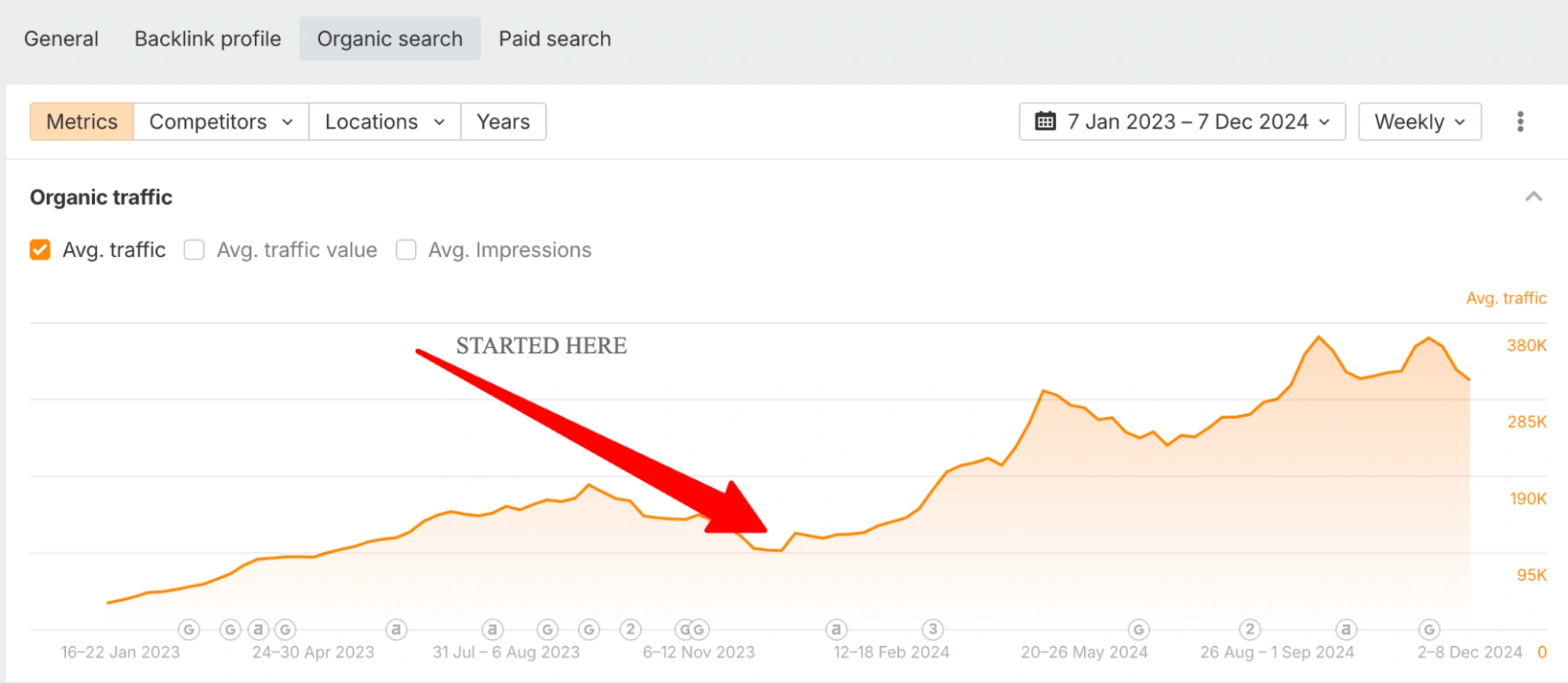
For me, this was one of those projects that proved just how powerful the right B2B SEO strategy can be. With the right research, smart execution, and a system that connects all the moving parts, even well-established companies can unlock a whole new level of growth.
SaaS SEO Case Study #2: Competing With Enterprise Giants
A few years ago, when CapCut was just beginning to grow and seriously invest in SEO, I joined their team as a link-building specialist. They hired me through Upwork, and unlike some of my other projects, this time I wasn’t working under the banner of my agency.
Instead, I came on board as a freelancer and SEO consultant, focused specifically on their link-building department.
One of the biggest challenges was the sheer dominance of these enterprise players. They already controlled the top positions in search results for many high-value keywords, which meant any strategy had to be incredibly smart and well-executed to even make a dent.
On a personal note, what really motivated me to take on this project was knowing that link-building is typically expensive and resource-heavy. But because CapCut was backed by TikTok’s parent company, budget wasn’t a concern.
You might also be interested in exploring our Enterprise SaaS SEO guide, where we dive deeper into strategies tailored for larger-scale SaaS businesses.
Strategy
When we began working together in 2022, the SEO landscape felt very different from what it is today. Back then, backlinks probably carried 60–70% of the weight in SEO performance, whereas today, with Google AI Overviews and evolving algorithms, the equation is much more complex.
Even so, one of the biggest factors behind CapCut’s success wasn’t just link-building; it was the strength of their brand reputation combined with a strong international SEO approach for SaaS.
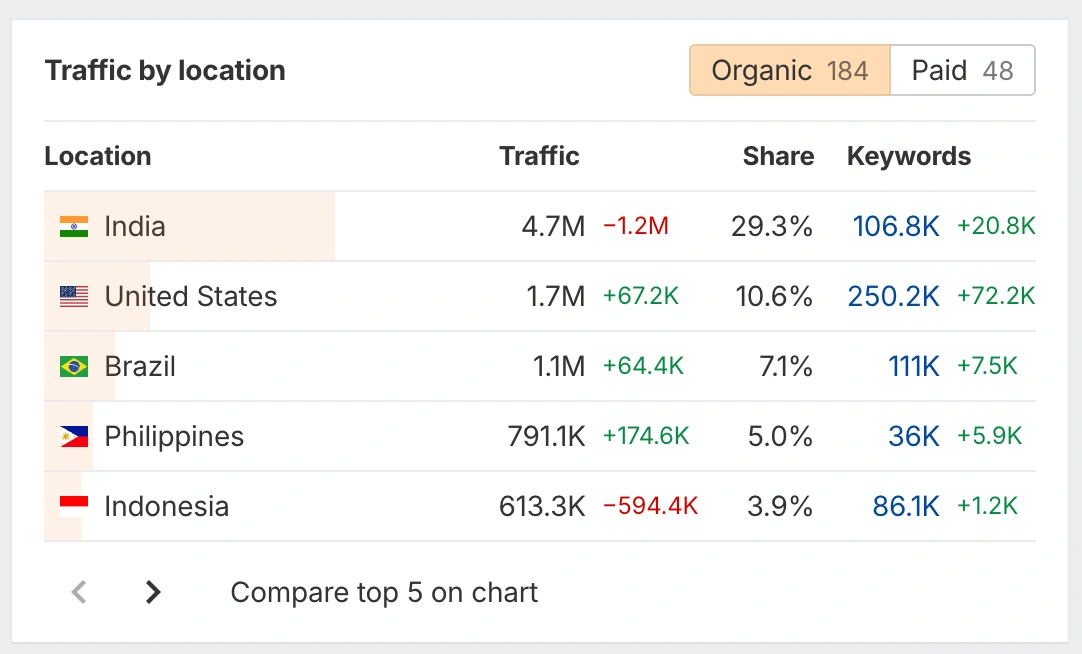
As for link-building, our SaaS-focused campaigns primarily relied on three core techniques: HARO link-building, niche edits, and resource page placements, with some guest posting on the side.
To be honest, the guest posts weren’t always in the highest-tier publications; sometimes, writing and placing top-level guest content is tough at scale. Still, the mix worked.
In the early stages, we measured opportunities based on metrics like organic traffic and relevance, often looking for sites with at least 5–10K monthly visits. Over time, as the campaign matured, we relaxed those minimums and focused on scaling.
In terms of link distribution, about 70% of our efforts targeted the homepage, with the remaining 30% focused on high-potential blog posts.
We also took advantage of multilingual link-building, which proved highly effective since competition in non-English markets was often much lower.
Also read: 8 Healthcare SEO Case Studies Based on Our Hands-On Experience
The Results
The outcome was massive. Within just one to two years, CapCut’s organic traffic grew from nearly nothing to around 14 million monthly visits.
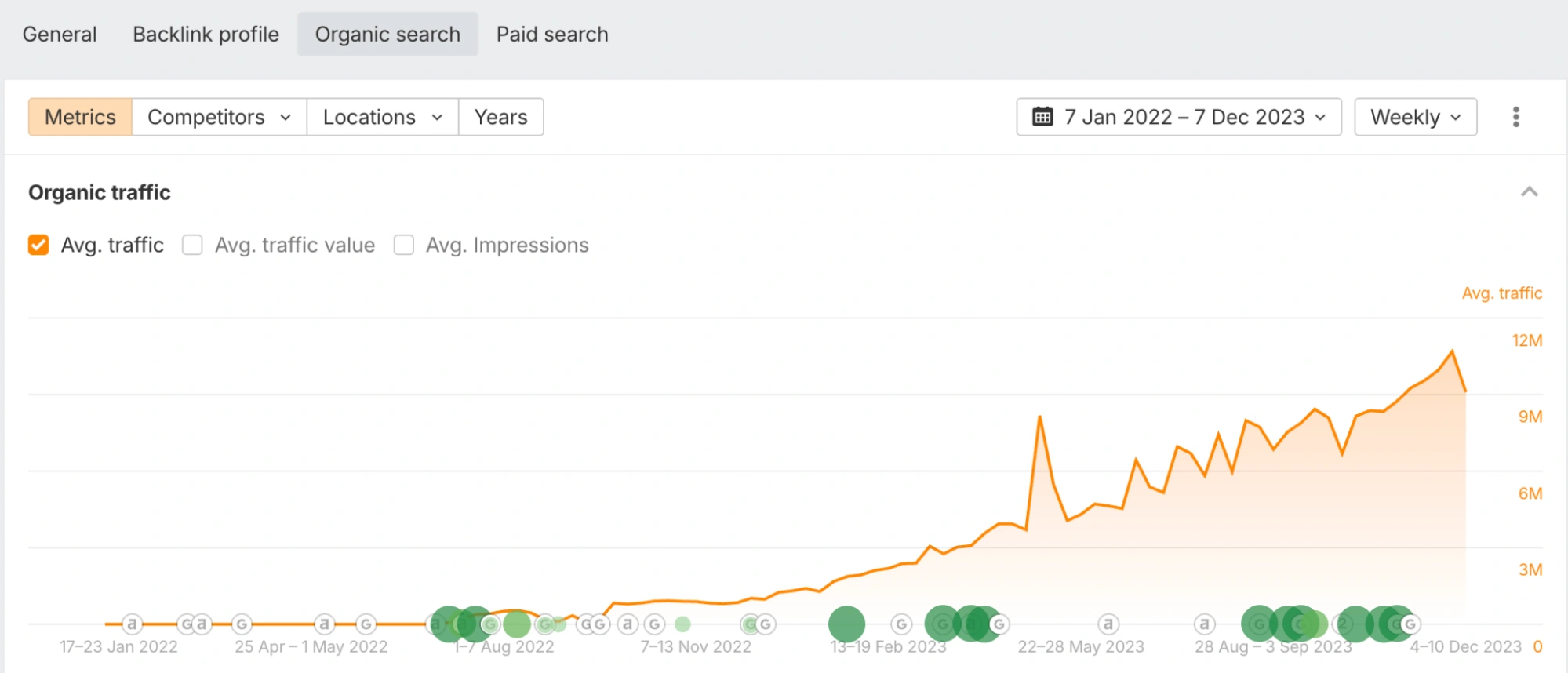
Their Domain Rating (DR) also skyrocketed, moving from the low end to above 80. Today, even though I’m no longer directly involved, I still track their progress.
The site has become a household name, and at this point, it generates backlinks and traffic organically simply because of the authority it has built.
SaaS SEO Case Study #3: Winning With Programmatic SEO
In late 2024, our SEO agency began working with a B2C SaaS company in the AI space. The platform specializes in AI-generated video creation, giving users the ability to produce high-quality videos automatically with features like customizable templates, voiceovers, and editing tools.
It was an exciting product with huge potential, but from day one, we faced a serious challenge.
The company had a limited SEO budget, and at the start, there wasn’t even funding set aside for link building. For any SaaS company, especially in the competitive AI industry, that’s a tough place to begin. In my opinion, this was the number one obstacle we had to overcome.
However, our team stayed persistent. We started building out a plan within those constraints, and after some progress, we were able to convince the investors to allocate additional resources.
Strategy
This one is one of my favorites. We kicked things off by studying the competition closely. One of the first steps was digging into the LinkedIn profiles of CEOs and co-founders from rival platforms like InVideo and Synthesia. From there, we looked at their success stories, how they built progress, and the kind of strategies that helped them scale.
We took all of those insights together and used them as inspiration to move aggressively with our own plan.
The priority was cleaning up the technical SEO for their SaaS. Since the product was built on Webflow, we optimized crawl budget, fixed structural issues, and cleared out anything that could hold us back. (By the way, if you want to learn how to properly optimize Webflow SEO for SaaS, you can check out my full guide.)
Once the technical foundation was strong, we shifted focus to content.
Our content strategy was structured across the funnel: TOFU, MOFU, and BOFU. While we balanced all three, we gave extra weight to BOFU content because that’s where the conversions came from.
We published competitor alternative pages, comparison reviews, and highly targeted posts that addressed decision-making searches.
Among these, one of the most effective clusters was around the “faceless video” topic, a niche where we quickly became an authority and saw significantly higher conversion rates.
As the strategy evolved, we realized programmatic SaaS SEO could be a game-changer. So, we built out hundreds of scalable pages for tools, use cases, and product features, each targeting long-tail keywords.

This approach was one of the core drivers of our success and a big reason we were able to grow so quickly.
Finally, once the content and technical foundations were in place, we ran SaaS link-building campaigns, including PR-driven backlinks, ABC exchanges, and other effective techniques.
Another core part of our success was the creation of linkable assets. We developed resources that were so valuable they attracted backlinks naturally, securing over 200 links from well-known sites like Adobe.com, Sprout Social, ClickUp, and many more.
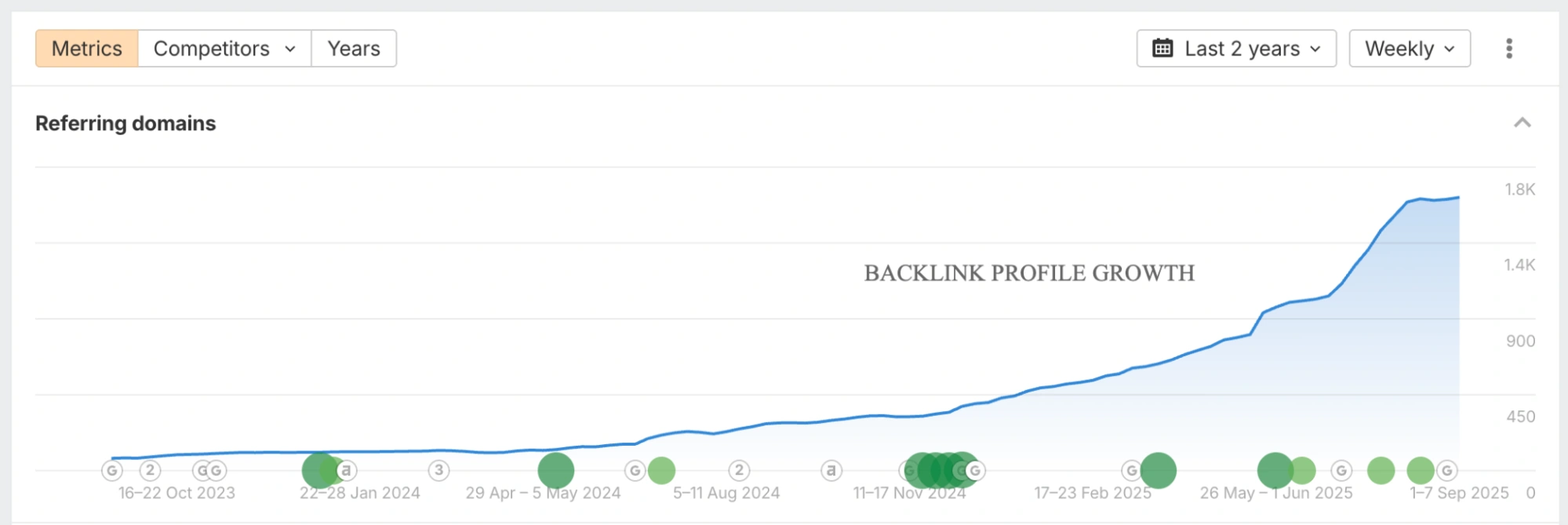
The Ahrefs DR grew from 14 to 65
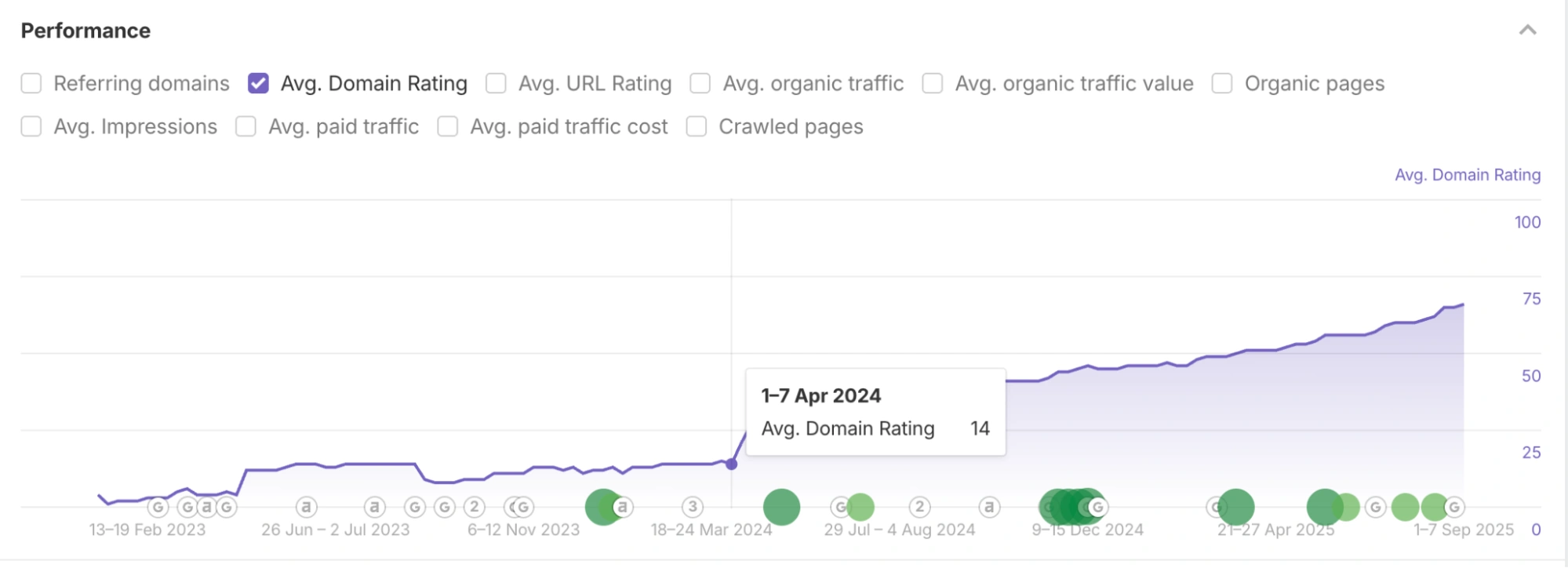
Right now, we’re still working with the company, continuing to automate large parts of the process and building on our early wins.
We’ve also started seeing strong results in optimizing their SaaS for LLMs, and if you’re curious about how to prepare your own assets for LLMs, you can check out my guide.
The Results
The results spoke for themselves: in just nine months, we drove a 350% increase in organic traffic.
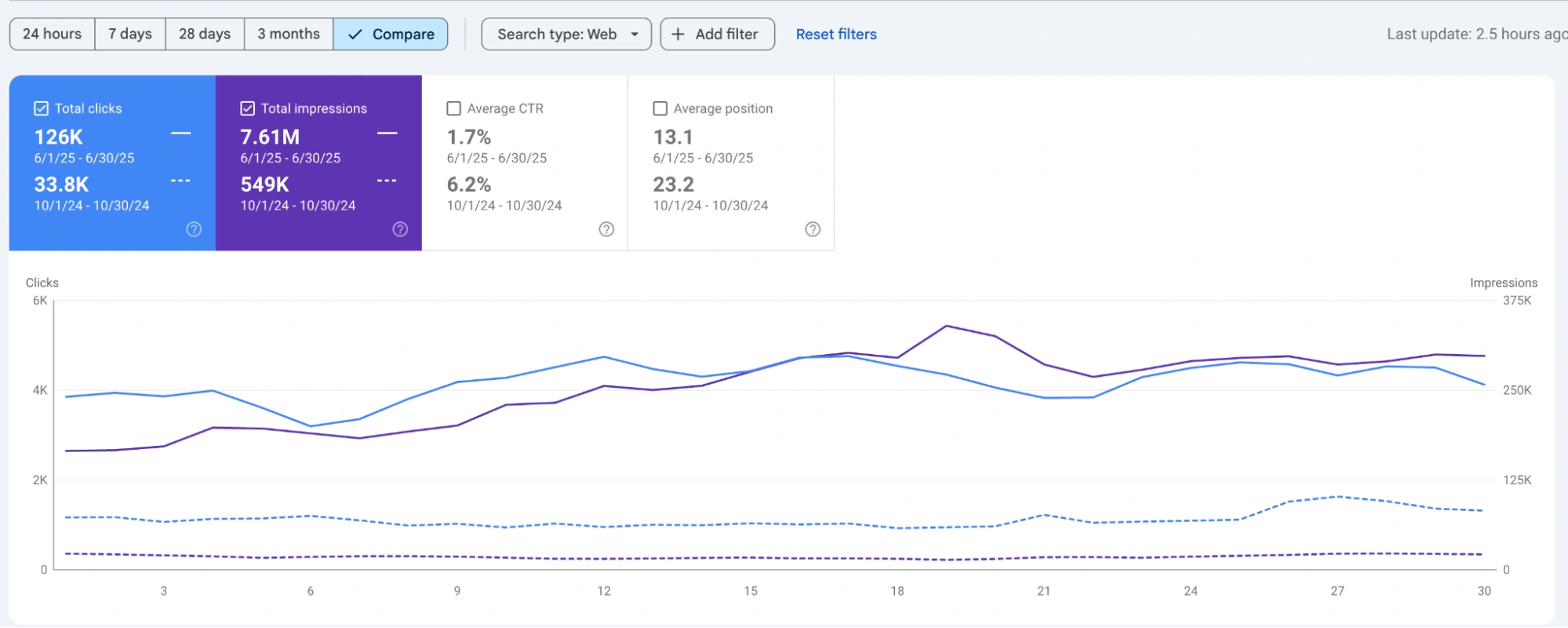
SaaS SEO Case Study #4: Driving Growth for a B2B SaaS Product
This case study is about a B2B SaaS project that was technically a browser extension, but it also had a standalone website. We started helping them in the very early phase, a little over two years ago. The site was built on HubSpot.
To be honest, I’ve never been a big fan of HubSpot, but for SaaS, it’s not the worst choice, especially given its reputation as a popular CMS platform. It wasn’t perfect, but it gave us enough flexibility to get moving.
The number one challenge, as with many SaaS projects, was competition. The LinkedIn automation and optimization industry is crowded, with multiple players targeting the same audience.
But here, we had one advantage: I know LinkedIn inside and out. I understand the platform, its best practices, how audiences behave, and how tools like this can actually bring value.
So we used that knowledge to guide the strategy. I imagined myself as someone who would need this extension, and from there, our team built out a customized approach.
Also read: Dental SEO Case Studies
Strategy
When we joined the project, the company already had more than 50 blog posts published. The problem was that none of them were optimized for SEO. There was no clear direction or strategy; the content felt random, with no structure or long-term plan behind it.
The first thing we did was run a full content audit for SaaS, and from there, we began optimizing the existing articles step by step.
Once the foundation was set, we shifted our focus to building dominance around LinkedIn-related search terms.
Over a period of about six to eight months, we created more than 100 new blog topics centered on LinkedIn. These posts weren’t isolated; we structured them as a content hub with a few pillar articles supported by clusters of related posts.
We internally linked everything together to strengthen topical authority and improve the overall site architecture.
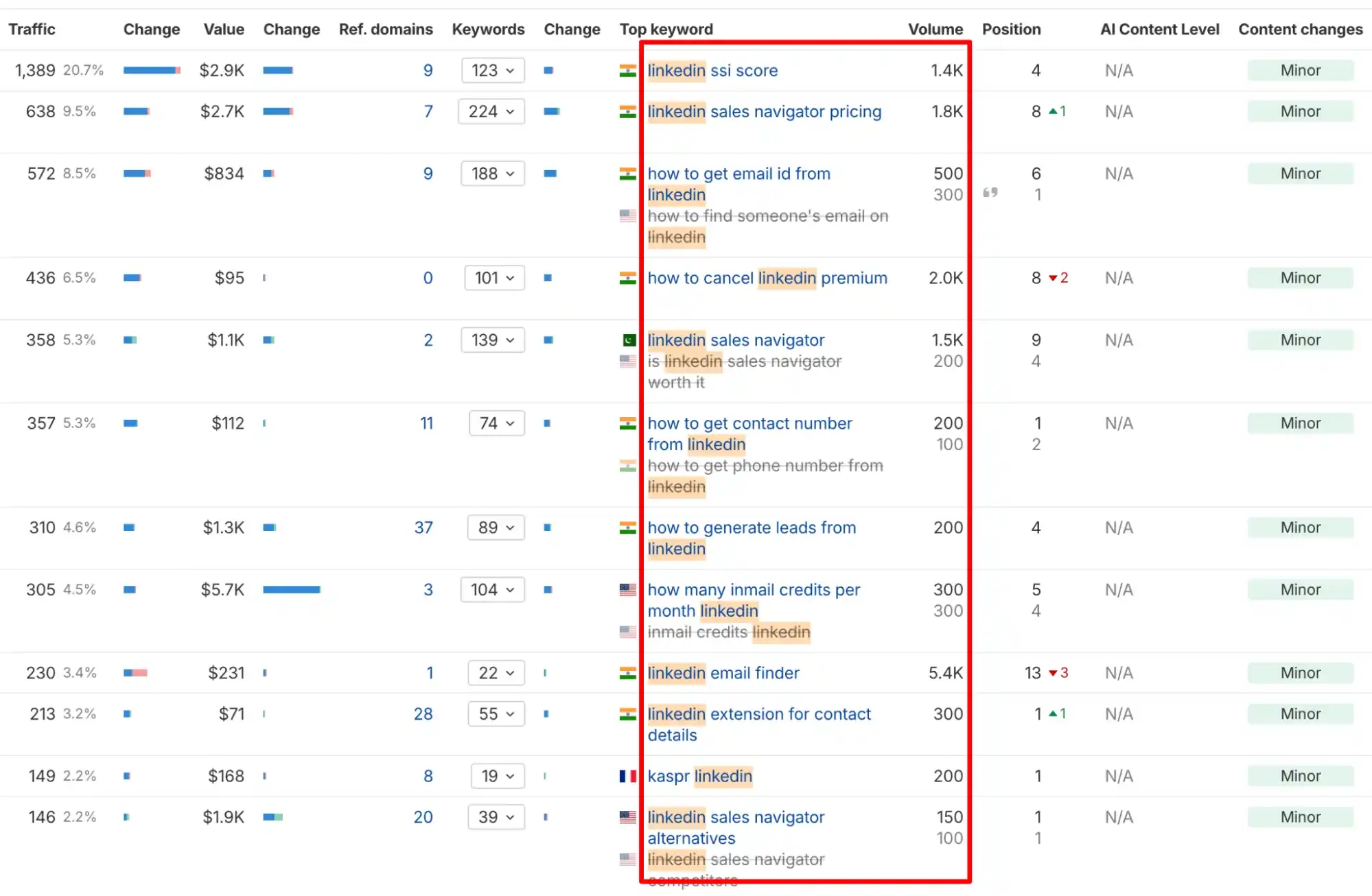
In my opinion, even without a strong backlink profile at the start, this approach alone was enough to generate meaningful results.
However, I believe that half of the success we achieved came purely from the strategy itself; the way we structured, optimized, and scaled the content.
Honestly, we also incorporated some AI SEO services to speed up parts of the process, and I believe this was one of the reasons we were able to outrank competitors faster.
Timing also played in our favor. During that period, Google didn’t roll out any major updates that worked against us. Instead, the algorithm shifts aligned well with what we were already doing: focusing on content quality and Google’s E-E-A-T standards.
Beyond content, the site’s design and user experience also made a big difference; it was clean, professional, and supported the product’s credibility.
Of course, I can’t overlook the impact of their digital PR team, who helped secure valuable PR backlinks that boosted authority over time.
The Results
The impact of our work was clear. Today, the client’s website ranks for more than 3,000 keywords in the top 10 positions.
These include highly competitive terms such as B2B lead generation services, lead generation services, B2B lead generation, and many other relevant searches within their niche.
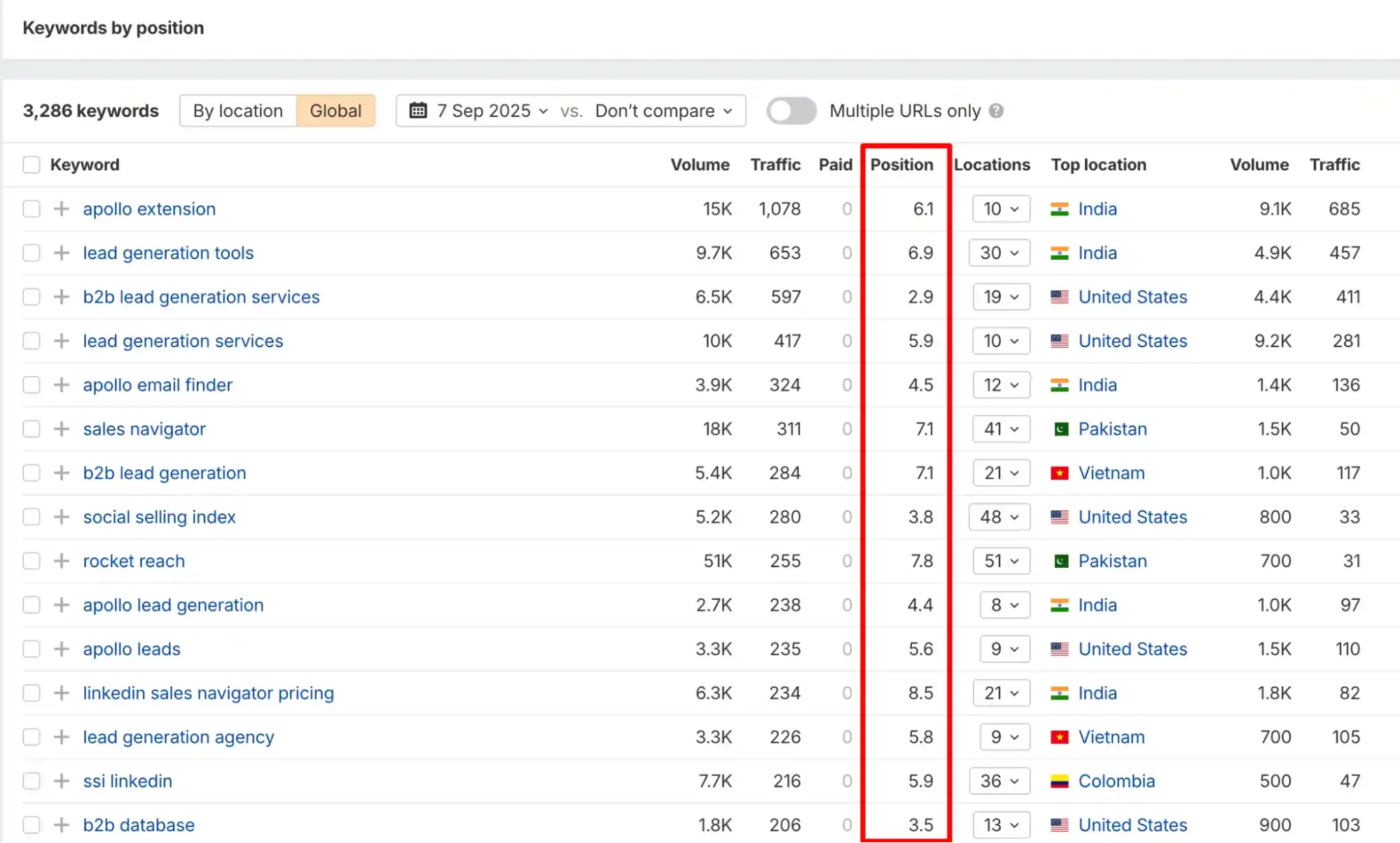
On top of that, the overall organic traffic has grown by more than 100%, turning their website into a consistent source of visibility and qualified leads.
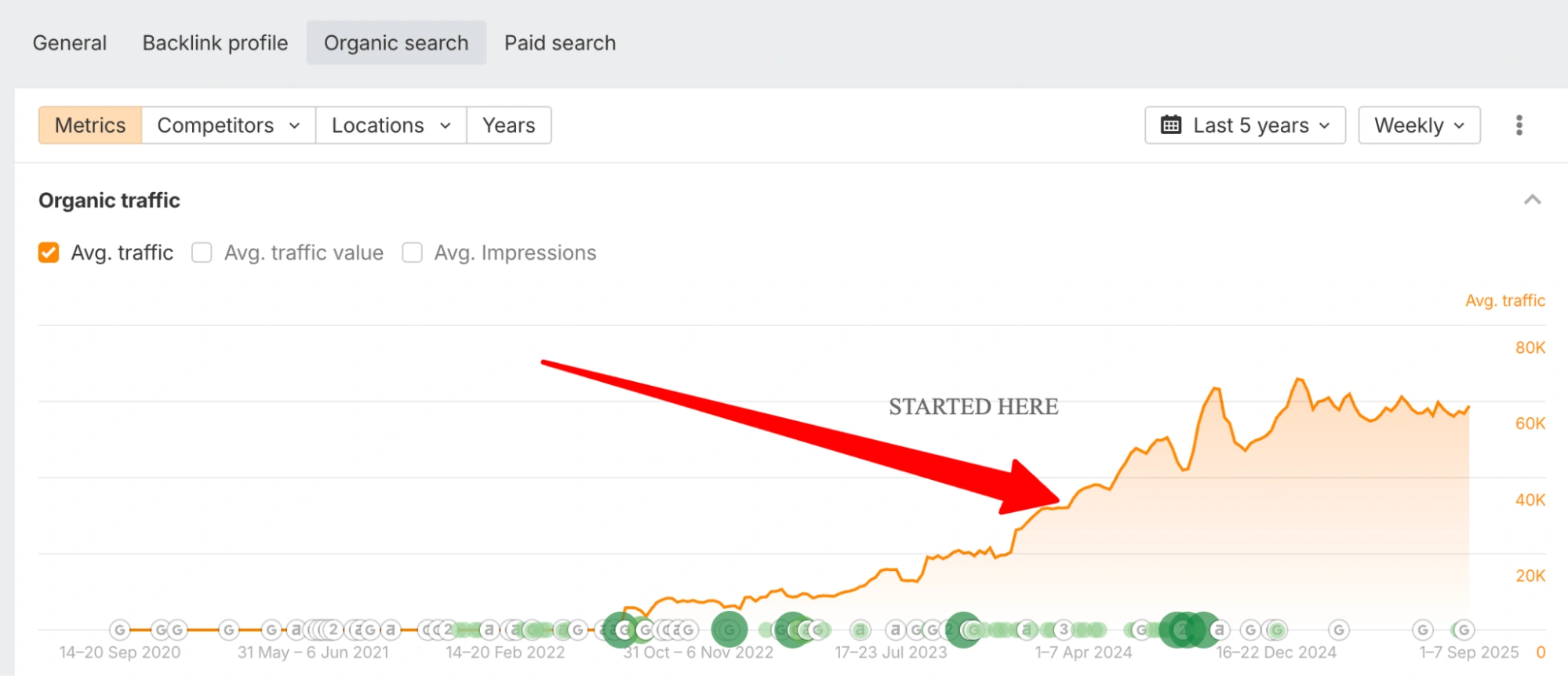
SaaS SEO Case Study #5: From Zero to Beating the #1 Competitor
A little over two years ago, we partnered with a SaaS company in the affiliate tracking space, before their website had even launched. For me, projects like this are some of the most exciting, because you get the opportunity to build the entire SEO strategy from the ground up, exactly the way you know it should be done.
There’s no legacy content to fix or messy structures to clean up; it’s a blank canvas.
The biggest challenge here was competition again. The industry already had two strong players: Postaffiliatepro and Tapfiliate.
Both had solid organic visibility and offered really good products. Competing with established SaaS companies like that is never easy.
However, we accepted the challenge and moved forward, equipped with the right tools, processes, and best practices to dominate the space for our client in this competitive market.
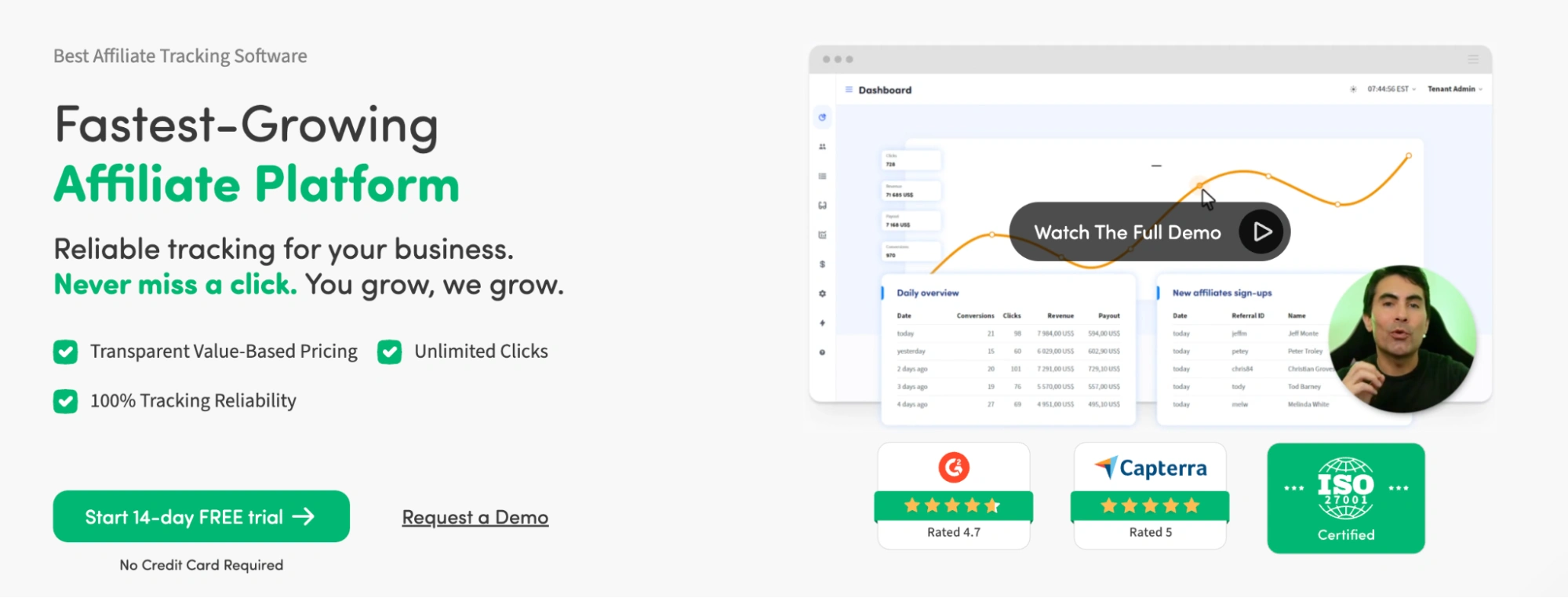
Strategy
For our team, the strategy was fairly straightforward to picture, mainly because we’d already worked on content strategies for affiliate-related software and similar projects in the past. While this wasn’t an identical case, that prior experience gave us a strong foundation to build on.
We started with the on-page SEO. The first step was a detailed SaaS keyword research process to uncover low-hanging opportunities.
From there, we mapped out all the key topics related to affiliate marketing and prioritized them by funnel stage: BOFU, MOFU, and TOFU.
Every piece of content was internally linked, creating a strong topical network that supported both relevance and authority.
We also helped the client identify their most important pages and then guided the creation of use cases and feature pages. Over time, these became a reliable source of additional traffic and conversions.
Later on, the company decided to invest in link-building. It wasn’t an aggressive push, but it added another level of authority that supported the content work we had already put in place.
Also read: 10 Link-Building Case Studies
The Results
Within just over a year, the strategy started to pay off. Traffic began climbing steadily, and most importantly, the site started ranking for core commercial keywords in the affiliate software space.
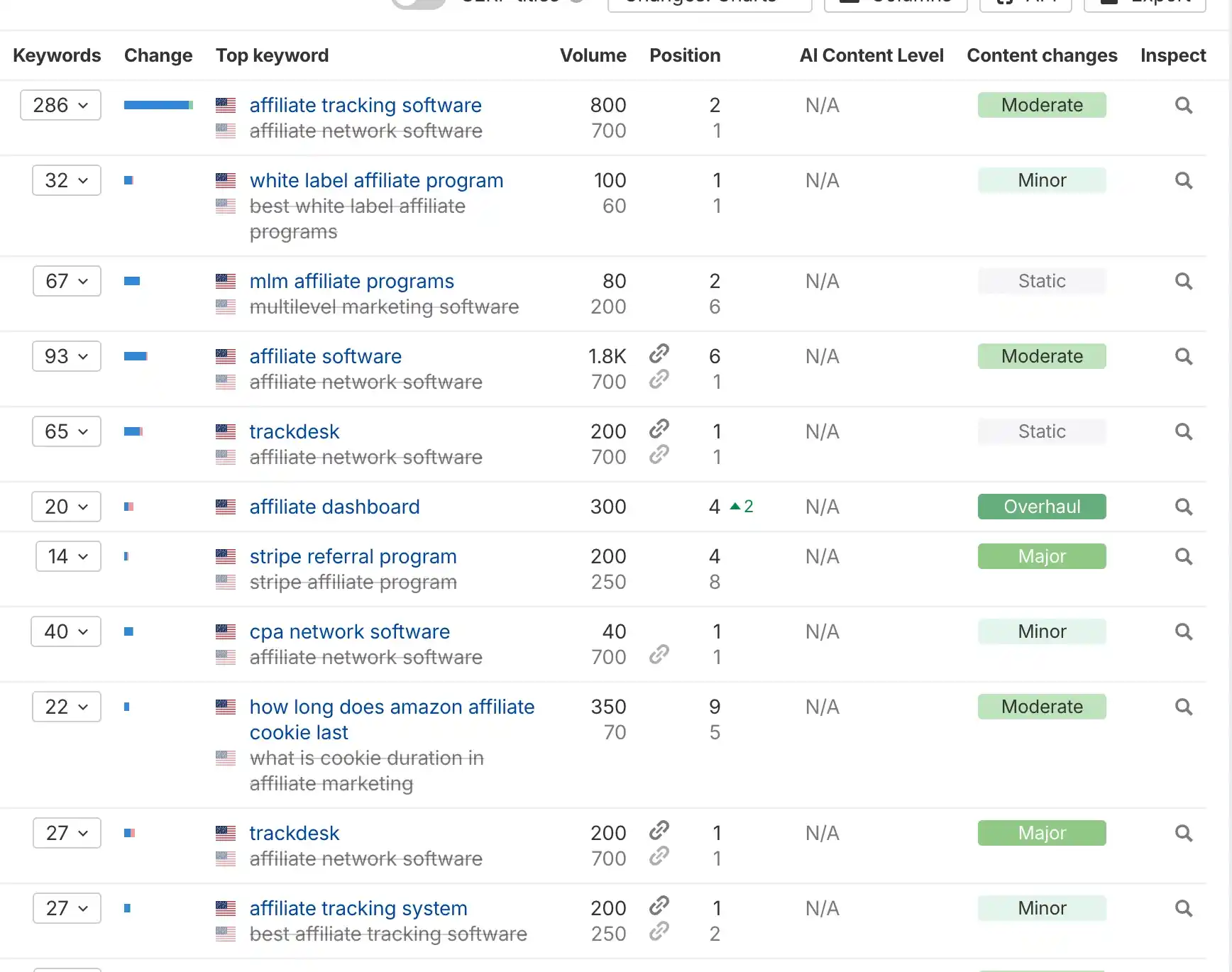
Today, the site dominates many of those terms, and has grown from zero traffic to more than 5,000 organic visits.
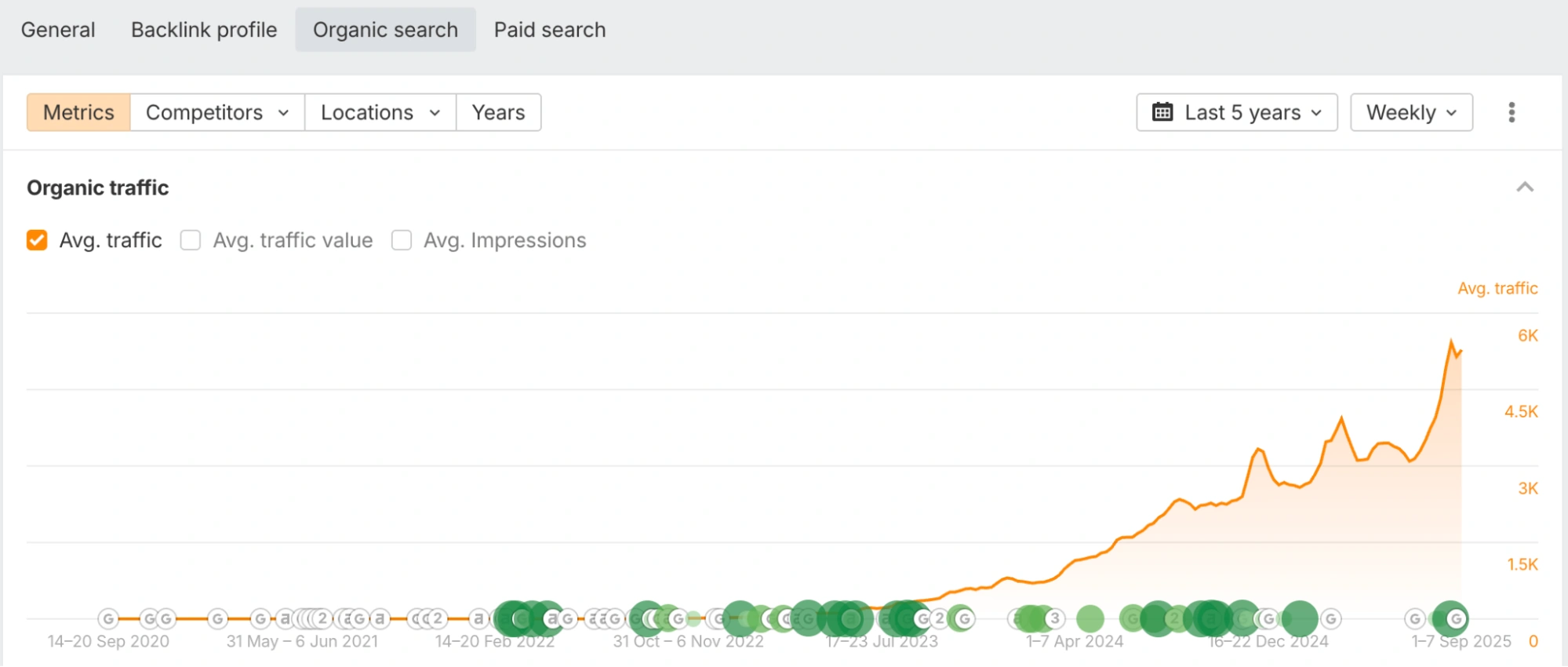
The Bottom Line
These five SaaS SEO case studies reflect real projects we’ve worked on and the results we were able to achieve. It’s important to note that the journey was never simple. There were challenges, failed experiments, and countless obstacles along the way.
Nothing in SEO, especially in the SaaS industry, comes easy. What made the difference was our dedication, persistence, and passion for SEO and SaaS as a whole.
Every success here was built step by step, fueled by careful strategy, attention to detail, and a constant willingness to adapt. While these case studies highlight the wins, they also represent the lessons we’ve learned from the harder moments; lessons that continue to shape the way we approach each new project.
If you’re growing a SaaS business and looking for a partner who not only understands the technical side of SEO but also has the real experience of helping SaaS companies scale, we’re ready to share that expertise with you.
Our focus is always on building strategies that deliver long-term growth, not just short-term traffic spikes.
We’re invested in helping SaaS companies achieve sustainable results, and if you’re ready to take your growth seriously, we’d be glad to help you do the same.





